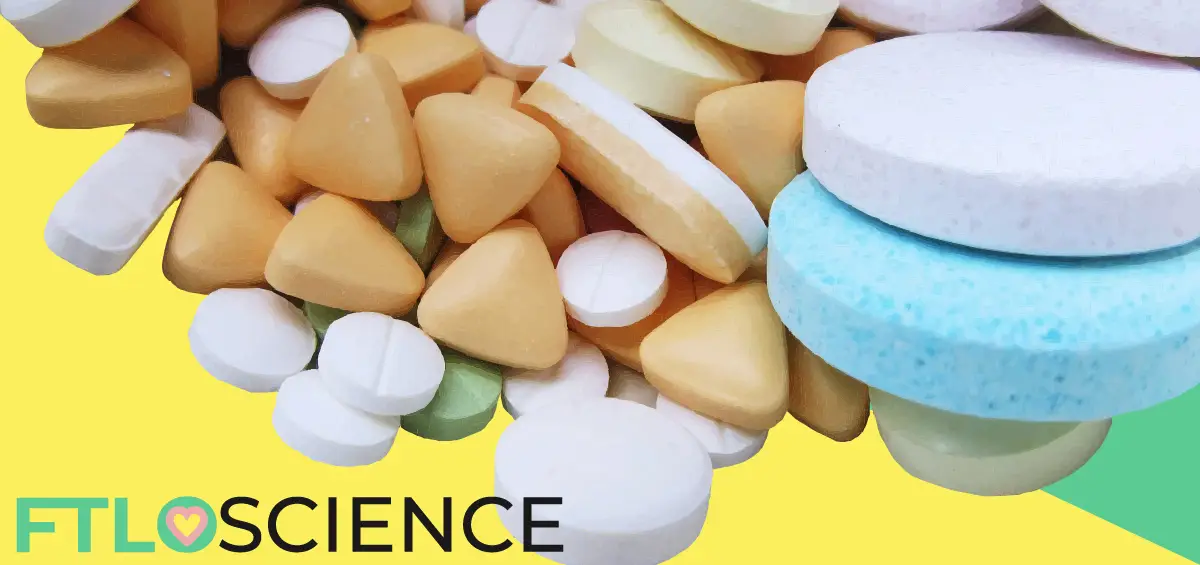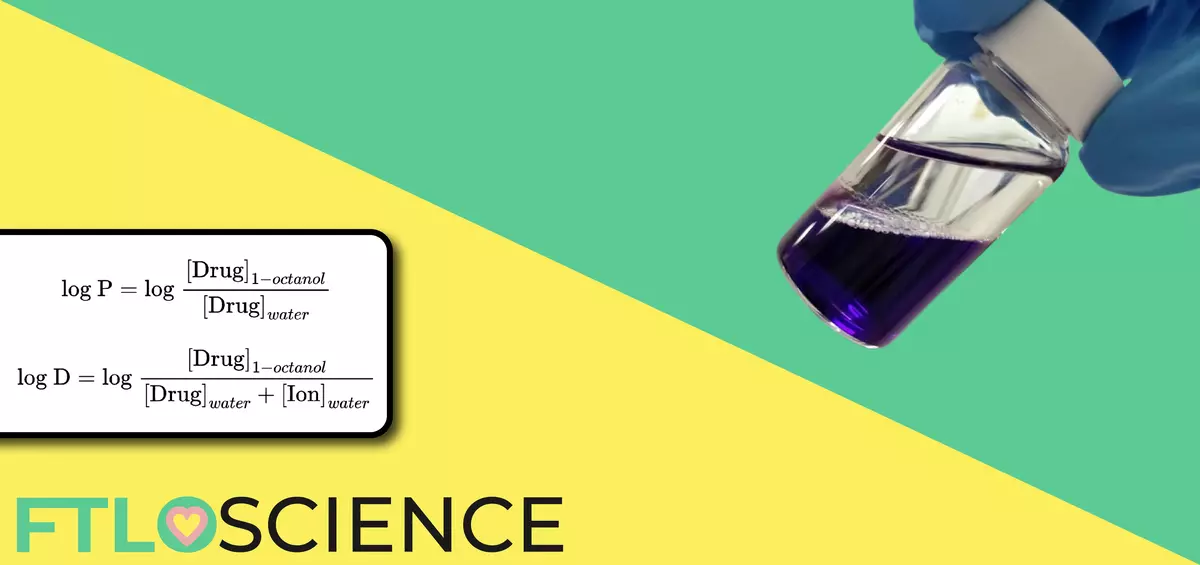Have you ever wondered why drug tablets come in so many shapes, sizes, and even colors? Or why we sometimes have to take two pills instead of one? One of the last steps in drug design and development is to pack it all into a nice little tablet. It might sound simple, but lots of factors go into deciding the final form of medicines. How do pharmaceutical companies design the picture-perfect pill?
As part of the drug development process, pills are made to have different shapes, colors and sizes. Among other factors, having a unique design helps with patient safety (preventing them from taking the wrong pill), prevents counterfeits, and enhances the drug’s brand image.
Tablet Design in Drug Development
Contents of a Tablet
The drug market is dominated by medicines in the form of tablets, handy little pills we can take at our convenience. These tablets contain the active pharmaceutical ingredient (API), the ‘good stuff’ that makes us feel better through chemical interactions in our bodies.
A tablet also contains excipients—inert compounds that can also serve as drug delivery systems. Excipients can control the rate at which the API is released into the bloodstream, where it can exert its therapeutic effects.
The composition of tablets is a critical part of research to ensure that the drug product remain stable and have a shelf life of at least 1 year. Choosing the right packaging for the tablet is also important for its stability.
Once the API and excipients are perfected in a medicinal chemistry program, the next step in drug development is to decide on a suitable design for the tablet.
Why Not Just Use a Plain White Tablet?
Pharmaceutical companies can choose to be boring and produce standard round white tablets without any special shape or color. In fact, this is what is usually given to patients during the clinical trial stage as it is good practice to remove any identifiers.
Also, with drug development costing upwards of US$2 billion, it wouldn’t make sense to spend the time and effort on tablet design if the drug never makes it to the market!
However, tablet design is an integral part of drug development, evident in the structural diversity of the medicines we take. As patients, we often associate a drug’s form with its function.
From the iconic blue diamond of Viagra (sildenafil) to the chunky white ovals of Lipitor (atorvastatin), patients are more likely to form a connection with the drug and the company that manufactured it, if they can easily distinguish it from its competitors.
There are also other more practical reasons why pharmaceutical companies invest in drug tablet design; we discuss them in the next section.
Factors in Tablet Design
Size Matters
The size of drug tablets can range from tiny spheres packed in capsules to large, bulky rods. When it comes to tablet design, smaller is usually better, but factors like the target patient demographic have to be taken into account.
Some individuals, especially children, have difficulty swallowing larger pills, which might deter them from taking the medication altogether. However, tiny pills are harder to handle, especially in the older population who might have poorer dexterity and eyesight.
In addition, how small a pill can get is dependent on the dosage. If a single dose of a drug requires a large amount of API or excipients, they are sometimes split into two smaller pills.
In most cases, patients prefer a single tablet per dose, as they might forget (in the case of older patients) or refuse to take multiple tablets (in the pediatric population).
Shape of Pills
While the size of a drug may be dependent on the dose, a tablet’s shape provides a little more freedom for modification. However, the surface area to volume ratio must be considered, as this can affect the rate of API release from the drug delivery components.
It is possible to simulate drug release kinetics using mathematical models, ensuring that the shape doesn’t affect the dissolution of the drug1.
Most tablets end up circular or with rounded corners, simply because they make the tablets easier to swallow. If the size of the dose is large, choosing the right shape can give the perception of a smaller tablet. Larger elongated shapes such as an oval or rectangle tablet are much easier to swallow than a large triangular pill!

It can be worthwhile to throw in a little bit of creativity when it comes to shapes. For example, a heart-shaped pill for a cardiovascular drug is a unique way of differentiating it from others. In many cases, having a unique tablet shape can also establish recognizability and brand loyalty in the medication.
Psychological Effects of Color
Being organic compounds, the components of pills make them naturally white. However, the range of dye pigments available provides us with the entire spectrum of colors to design drugs.
The light blue color of Viagra is associated with the color of the sky, giving individuals feelings of happiness and relaxation. Many heart medications are colored red or pink, signifying both power and danger2.
You don’t see many black tablets as the color is often associated with death and other negative emotions. Colors such as greenish-yellow are also seldom seen as it reminds individuals of vomit, evoking feelings of sickness and disgust.
The color of a tablet can influence patient compliance, as they are more likely to take their medication consistently if they find it to be visually appealing.
Regulatory Requirements
It’s not all invoking the right emotions in the patient, however, with specific regulations requiring differentiation between dosage forms of the same drug. Pharmaceutical companies aren’t allowed to color all their tablets the same color, as convenient as that sounds. This failsafe measure prevents pharmacists and doctors from dispensing the wrong drug while protecting patients from potential medicine mix-ups.
The popular tranquilizer diazepam, better known by its brand name Valium, is marketed by Roche in three dosage forms (shown below). Although the dimensions are the same for each tablet, they differ in color.

Depending on the country it will be marketed, there may be further regulatory guidelines regarding using certain pigments or additives in drugs. For example, certain red dye pigments (Red 21, 27) are prohibited in Japan, although they are allowed in U.S. and EU markets.
All forms of a particular yellow dye (Yellow 10) are permitted in Japan, whereas the EU only allows its disodium salt to be used; the U.S. Food and Drug Administration does not certify the disodium salt of Yellow 10.
Additional Markings
Many drugmakers also choose to etch certain words, numbers, or even symbols on the surface of their tablet. Sometimes, tablets are scored along the middle to allow for easier breaking into smaller doses.
In addition to providing the patient with a further form of identification, these markings also make it more difficult for counterfeit versions of the drug to be manufactured.
The counterfeit drug industry is worth billions, with illegal drug manufacturers selling their products online and through channels that bypass regulation. Having additional features, such as a special film coating or a unique flavor, helps officials and consumers to differentiate between the genuine and counterfeit versions of a drug3.
In the example below, screening technology under U.V. light developed by the U.S. FDA allows for quick identification between authentic and counterfeit drugs, taking advantage of differences in the fluorescent properties of capsule film coatings.

Wrapping it Up
Tablet manufacturing is one of the most cost-effective methods to produce medicines quickly, ensuring an adequate supply of affordable drug products for patients.
Hence, the extent of tablet design has to be balanced with the costs involved. For each additional feature on the tablet, the cost of producing the drug goes up. Furthermore, specialized manufacturing equipment may be required to produce pills with elaborate shapes and designs.
It can be a challenge to reduce costs while fulfilling regulatory requirements, maintaining brand awareness and deterring counterfeits. In addressing all these factors, drug tablet design becomes a task that demands careful planning paired with flair and creativity.
Reference
- Paolino, D., Tudose, A., Celia, C., Di Marzio, L., Cilurzo, F., & Mircioiu, C. (2019). Mathematical Models as Tools to Predict the Release Kinetic of Fluorescein from Lyotropic Colloidal Liquid Crystals. Materials, 12(5), 693.
- NAz, K. A. Y. A., & Epps, H. (2004). Relationship between color and emotion: A study of college students. College Student J, 38(3), 396.
- Platek, S. F., Ranieri, N., & Batson, J. (2016). Applications of the FDA’s Counterfeit Detection Device (CD3+) to the Examination of Suspect Counterfeit Pharmaceutical Tablets and Packaging. Microscopy and Microanalysis, 22(S3), 1072-1073.
About the Author

Sean is a consultant for clients in the pharmaceutical industry and is an associate lecturer at La Trobe University, where unfortunate undergrads are subject to his ramblings on chemistry and pharmacology.



